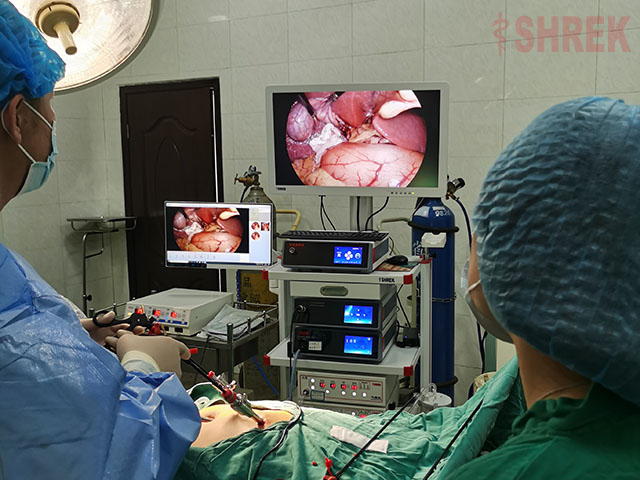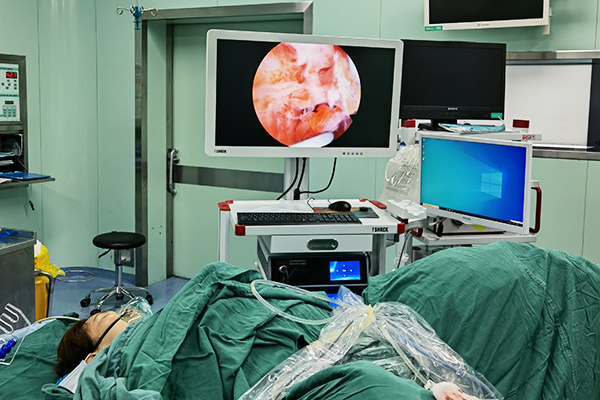types of minimally invasive surgery
With the continuous development of the medical level, the concept of "minimally invasive" has been widely used in various fields of surgery, and the monitoring system is not limited to endoscopes, but more interventional methods, such as spine surgery and orthopedics. There are other methods, such as microsurgery is widely used in hand surgery and so on.
types of minimally invasive surgery
What are the types of minimally invasive surgery? There are many types of minimally invasive surgery. Almost all departments of the surgical system can carry out minimally invasive surgery, which can be roughly divided into the following points:
1. Minimally invasive surgery of the chest, mostly by thoracoscopy and treatment, such as lung nodules and mediastinal diseases can be treated minimally.
2. Abdominal surgery. The common operation is laparoscopic appendectomy for acute appendicitis. Laparoscopic exploration can understand the perforation and bleeding of the abdominal cavity.
3. Pelvic surgery, such as female hysteroscopic surgery and laparoscopic surgery can treat ovarian cancer, cervical cancer, and uterine fibroids.
What kind of surgical treatment is minimally invasive surgery?
In terms of basic surgical treatment, since it is an operation, whether it is gastrointestinal surgery, gastrointestinal surgery, or heart surgery, the epidermis has relatively large scars, more than ten minutes, twenty centimeters, or even three. A wound of more than ten centimeters is possible. The minimally invasive device carries out the basic surgical operation in the abdomen, and the actual operation of surgical treatment is basically the same as the operation. However, the wound on the patient’s epidermis is indeed very subtle. The equipment enters the wound usually 0.5 to 1 cm. The total length of the damage may be 5 to 6 cm, and it is spread all over the epidermis, and the location is very concealed. It has many advantages in terms of appearance and repair of the patient's wound after surgery.
types of minimally invasive surgery
1. Laparoscopic surgery minimally invasive surgery
Since 1991, after the completion of the first laparoscopic cholecystectomy in my country, the use of laparoscopic minimally invasive surgery has become more and more common. The actual operation under laparoscopic surgery is much more detailed than open surgery. Because the actual operation position can be enlarged with the help of optical zoom, this shows the technical guarantee for the meticulous actual operation of the beauty seeker. In addition, under the careful practical operation, the bleeding of surgical treatment will be reduced a lot, and the side damage caused by surgical treatment will also be reduced.

Hysterectomy
Laparoscopic cholecystectomy
2. Hysteroscopic minimally invasive surgery
In the treatment of uterine fibroids, patients with subserosal uterine fibroids or intramural fibroids should be selected for uterine fibroids removal. Patients with multiple uterine fibroids and uterine fibroids with cervical disease should be selected. Choose a total hysterectomy. In the previous laparoscopic hysterectomy, the uterus with a net weight of 1700 grams was removed, which is about the size of the uterus in the 6th month of pregnancy. In laparoscopic surgery, uterine fibroids can be stripped and opened up to 15 uterine fibroids, achieving the goal of open surgery.

Hysteroscopy The principle of hysteroscopy is basically the same as that of laparoscopic surgery. The whole operation process is as follows: After the patient is anesthetized, the doctor inserts the hysteroscope according to the patient's vagina and cervical canal, and connects it to the LCD TV screen according to the pinhole camera; The doctor saw the display screen and carried out the actual operation based on the laser cutting equipment of the hysteroscope. Finally, the removed lumps or diseases were removed from the vagina through the cervix with needle-nose pliers, leaving no postoperative scars on the abdomen.
Conditions suitable for laparoscopic surgery: submucosal uterine fibroids (type 0, type 1, type 2), multifunctional abnormal uterine bleeding, uterine mediastinum, uterine polyps, uterine adhesion dissolution, etc., caused by fallopian tube obstruction Infertility, rupture of the contraceptive ring, mobile removal, etc. This type of surgical treatment in the whole hospital is basically performed under hysteroscopy.
The shortcomings of hysteroscopic minimally invasive surgery are the same as those of laparoscopic minimally invasive surgery. They have a strong sense of reliance on equipment, and they also sharpen the level of physicians.
3. Robotic surgery
At this stage, there are very few outpatient clinics in China that can perform this surgical treatment, and they are all outpatient clinics in China's top hospitals. Robotic surgery is actually only a robotic arm. The doctor pushes the robotic arm to carry out surgical treatment based on sensors, miscellaneous belts, and moving pulleys. This surgical treatment cannot be performed normally without human beings.
The trauma and scars of robotic surgery are the same as the above laparoscopic surgery and hysteroscopy, but the cost will be higher.

